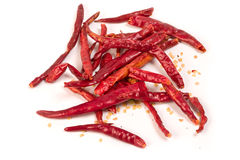Chinese garlic has a large, flat, regular and white head with purple strias. It contains 10-12 straight cloves covered by a skin with a pinkish colour. It has a mild spicy flavour.
Garlic, garlic, hanging on the wall, which of you is the best of all? The first step to a perfect meal is selecting the ideal bulb from the more than 400 species and varieties of garlic. Allium sativum is the most common type of garlic; it is the one you'll typically find in the grocery store and is often called "culinary" garlic. Fortunately, this is the species that also offers the most healing properties.
You might occasionally find Allium ursinum in specialty or farmer's markets. Allium ursinum is a type of wild garlic native to Northern Europe that does not possess the same healing properties as Allium sativum. You might also come across Allium vineale, a garlic with very small cloves that is commonly called "crow garlic." This variety is nothing more than a weed.
Allium sativum has two subvarieties: softneck and hardneck. The two types have similar healing properties because they belong to the same species, but they differ in flavor, clove size, shelf life, and use.
Softneck Garlic
Softneck garlic is the type you'll most likely see in the produce section of your grocery store. Its name comes from the multilayered parchment that covers the entire bulb, continues up the neck of the bulb, and forms a soft, pliable stalk suitable for braiding. Its papery skin, or sheath, is a beautiful creamy white color.
">Softneck garlic typically has several layers of cloves surrounding the central portion of the garlic bulb. The outermost layer's cloves are the stoutest; the cloves of the internal layers become smaller closer to the center of the bulb. Of the several types of softneck garlic, two are most abundant:
Silverskin garlic. This easy-to-grow variety has a strong flavor and stores well when dried -- it will last nearly a year under the right conditions. The Creole group of silverskin garlics has a rose-tinted parchment.
Artichoke garlic. Artichoke garlic has a milder flavor and may have fewer and larger cloves than silverskin. You can store it as long as eight months. Artichoke garlic may occasionally have purple spots or streaks on its skin, but don't confuse it with purple stripe garlic, a hardneck variety that has quite a bit of purple coloring.
Hardneck Garlic
Unlike softneck garlic, hardneck varieties do not have a flexible stalk. When you buy this type of garlic, it will typically have an extremely firm stalk protruding an inch or two from the top of the bulb.
Hardneck garlic sends up scapes from its central woody stalk when it is growing. A scape is a thin green extension of the stalk that forms a 360-degree curl with a small bulbil, or swelling, several inches from its end. Inside the bulbil are more than 100 tiny cloves that are genetically identical to the parent bulb beneath.
Many people call these "flowers," but they are not really blooms. If left on the plant, the scape will eventually die and fall over, and the tiny cloves will spill onto the ground. However, most never make it that far.
Cutting off the scapes keeps the plant's energy from forming the bulbil and therefore encourages larger bulbs. But don't throw out the scapes. They can be a delicious ingredient in your cooking.
There are three main types of hardneck garlic:
Rocambole. This variety has a rich, full-bodied taste. It peels easily and typically has just one set of cloves around the woody stalk. It keeps for up to six months.
Porcelain. Porcelain garlic is similar to rocambole in flavor and typically contains about four large cloves wrapped in a very smooth, white, papery sheath. People often mistake porcelain garlic for elephant garlic because its cloves are so large. Porcelain garlic stores well for about eight months.
Purple stripe. This hardneck variety is famous for making the best baked garlic. There are several types of purple stripe, all with distinctive bright purple streaks on their papery sheaths. Purple stripe garlic keeps for about six months.
Another member of the Allium clan, elephant garlic (Allium ampeloprasum), may look like a good buy because it is so large, but its flavor is very bland. Elephant garlic tastes more like a leek; in fact, its garlic flavor is slight and its healing properties are inferior to those of other garlic varieties. Use elephant garlic more like a vegetable than a flavorful herb.
What is the difference between White Garlic and Purple Garlic?
White garlic is widely available, whereas, purple garlic is less prevalent. Softneck garlic is always white in color, much easier to grow and are hardier compared to hardneck garlic. These white species are more conducive to travel and shipping. White garlic tends to have a very powerful flavor and scent. Often, white garlic has more cloves than purple garlic. Hardneck garlic has a milder taste and odor. Purple Garlic cannot be stored for long periods like white garlic. However, hardneck garlic retains their sweet aroma even after cooking. Generally, purple garlic has fewer cloves than white garlic.
